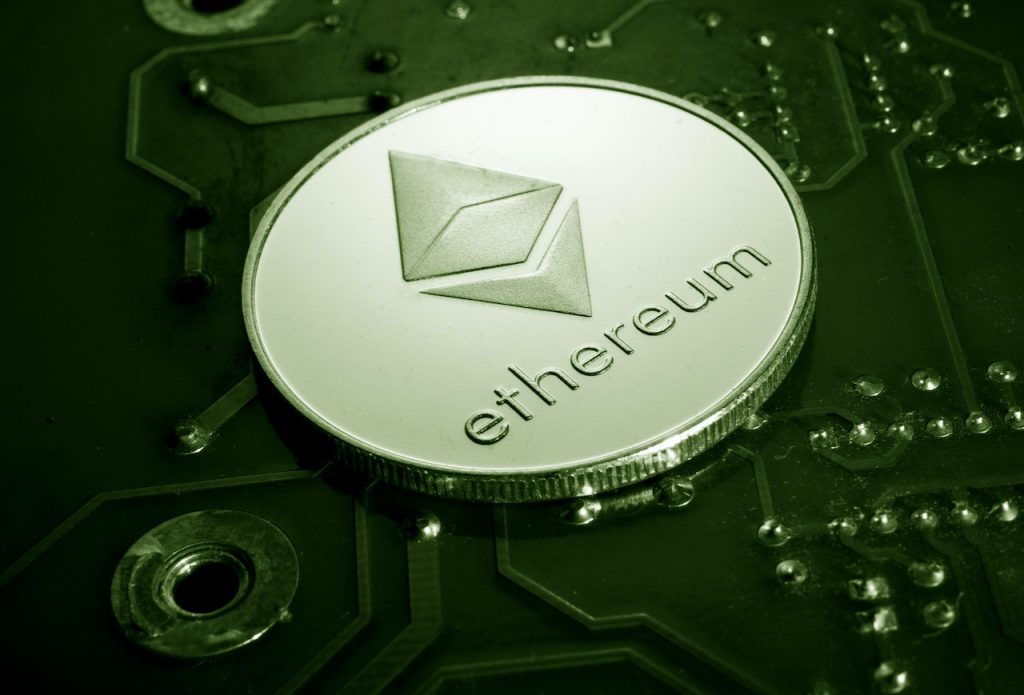
James Carter
Is Ethereum a Good Coin? An In-Depth Analysis of its Strengths, Weaknesses, and Market Standing

Cryptocurrencies have become an integral part of the digital landscape, with Ethereum emerging as one of the prominent players in the market. In this article, we will delve into Ethereum’s strengths, weaknesses, and evaluate its standing as a coin. By examining its features, market performance, and expert opinions, we aim to provide a comprehensive analysis to help readers make informed decisions.
Is Ethereum a Good Coin?
Ethereum, launched in 2015, is a decentralized blockchain platform that enables the creation and execution of smart contracts. Its key features include the ability to develop decentralized applications (DApps) and its native cryptocurrency called Ether (ETH). With its Turing-complete programming language, Ethereum allows developers to build complex applications on its platform, fostering innovation and expanding the blockchain ecosystem.
Evaluation of Ethereum’s Strengths
Smart contract functionality
Ethereum’s smart contract capability sets it apart from other cryptocurrencies. Smart contracts are self-executing agreements with predefined conditions. They eliminate the need for intermediaries, offering transparency, security, and automation. This feature has enabled the rise of decentralized finance (DeFi), non-fungible tokens (NFTs), and various other applications built on the Ethereum network.
Decentralized applications (DApps)
Ethereum’s platform supports the development and deployment of DApps, offering a robust infrastructure for developers. The Ethereum Virtual Machine (EVM) provides a runtime environment for executing smart contracts, making it easier to create and launch decentralized applications. This has led to a vibrant ecosystem of DApps, ranging from decentralized exchanges to gaming platforms.
Community and developer support
Ethereum boasts a large and active community, comprising developers, enthusiasts, and stakeholders. This community contributes to the continuous improvement and development of the Ethereum network through discussions, collaborations, and open-source contributions. The Ethereum Foundation plays a pivotal role in supporting research, projects, and the growth of the ecosystem.
Wide range of use cases
Ethereum’s versatility allows for a wide range of use cases beyond financial applications. It has facilitated the development of decentralized applications in sectors such as supply chain management, identity verification, governance, and more. The flexibility of Ethereum’s platform makes it attractive to developers and businesses seeking to leverage blockchain technology.
Ethereum Improvement Proposals (EIPs)
Ethereum Improvement Proposals (EIPs) serve as a mechanism for proposing and implementing upgrades to the Ethereum network. EIPs promote transparency and community participation in the decision-making process. Notable EIPs, such as EIP-1559, have aimed to address scalability and gas fee issues, demonstrating Ethereum’s commitment to evolving and addressing user concerns.

Analysis of Ethereum’s Weaknesses
Scalability challenges
One of Ethereum’s significant challenges is scalability. As the network became more popular, it faced congestion and slower transaction speeds, resulting in higher gas fees. Ethereum 2.0, an upgrade currently underway, aims to address these issues through a transition from proof-of-work (PoW) to proof-of-stake (PoS) consensus mechanism, introducing shard chains for scalability.
Gas fees and transaction speed
Ethereum’s gas fees, which represent the cost of executing transactions and smart contracts, have been a point of criticism. During periods of high network activity, gas fees can surge, making transactions expensive for users. This issue has led to the exploration of layer 2 solutions, such as Optimistic Rollups and ZK-Rollups, to alleviate congestion and reduce fees.
Environmental concerns
Ethereum, like many other cryptocurrencies, operates on a proof-of-work consensus mechanism, requiring significant computational power and energy consumption. This has raised concerns about its environmental impact, especially in light of the growing global focus on sustainability. However, Ethereum 2.0’s transition to proof-of-stake aims to mitigate these concerns by significantly reducing energy consumption.
Potential regulatory hurdles
The decentralized nature of Ethereum and its smart contracts pose regulatory challenges. As governments worldwide grapple with regulating cryptocurrencies, there is a potential risk of increased scrutiny, regulatory restrictions, and compliance requirements. This uncertainty could impact Ethereum’s adoption and overall market standing.
Comparison to Other Cryptocurrencies
Bitcoin
Ethereum and Bitcoin are often compared as leading cryptocurrencies, but they serve different purposes. While Bitcoin primarily functions as a store of value and digital currency, Ethereum focuses on smart contracts and DApps. The two coins have distinct ecosystems and target different use cases, making them complementary rather than direct competitors.
Ripple
Ripple (XRP) is another prominent cryptocurrency that offers fast and low-cost cross-border transactions. Unlike Ethereum, Ripple aims to facilitate seamless money transfers between financial institutions. While both Ethereum and Ripple have unique features, their core functionalities differ, catering to different aspects of the financial ecosystem.
Cardano
Cardano (ADA) is a blockchain platform that shares similarities with Ethereum. It offers smart contract functionality and aims to provide a secure and scalable infrastructure for decentralized applications. Cardano’s focus on academic research and a layered protocol approach sets it apart from Ethereum. Both platforms are actively competing for developer adoption and market share.
Polkadot
Polkadot (DOT) is a multi-chain platform that enables the interoperability of multiple blockchains. It seeks to address scalability and compatibility issues faced by single-chain platforms like Ethereum. Polkadot’s unique architecture allows for the seamless transfer of assets and data across different blockchains, potentially providing solutions to Ethereum’s scalability challenges.
Market Performance and Adoption
Market capitalization and price trends
Ethereum has consistently maintained its position as one of the largest cryptocurrencies by market capitalization. Its price has experienced significant growth over the years, reflecting increasing demand and market confidence. However, price volatility remains a characteristic of the cryptocurrency market, and investors should exercise caution.
Institutional adoption and partnerships
Ethereum has witnessed growing institutional adoption and partnerships, signaling increased recognition of its potential. Several major financial institutions and corporations have integrated Ethereum or developed applications on its platform. Additionally, the emergence of decentralized finance (DeFi) has attracted significant attention, further expanding Ethereum’s user base.
Global reach and user base
Ethereum’s influence extends globally, with developers, users, and communities around the world actively engaging with the platform. Its widespread adoption and developer support have resulted in a rich ecosystem of projects, applications, and decentralized autonomous organizations (DAOs). This global presence contributes to Ethereum’s resilience and longevity.
Risks and Challenges
Security vulnerabilities and hacking incidents
While Ethereum’s blockchain technology offers robust security, it is not immune to vulnerabilities and hacking incidents. Smart contract bugs and security flaws have led to significant financial losses in the past. Ongoing efforts to enhance security measures, conduct audits, and educate developers are crucial in mitigating these risks.
Potential competition from newer platforms
The blockchain industry is highly dynamic, with new platforms continuously emerging. Competing platforms that address Ethereum’s limitations, such as scalability and transaction costs, pose a potential challenge to Ethereum’s market dominance. Ethereum must innovate, adapt, and provide compelling solutions to maintain its competitive edge.
Legal and regulatory uncertainties
The regulatory landscape surrounding cryptocurrencies remains uncertain and varies across jurisdictions. Ethereum’s compliance with evolving regulations and its ability to navigate legal frameworks will impact its long-term prospects. Regulatory clarity is essential to foster broader adoption and establish Ethereum as a trusted and compliant platform.

Expert Opinions and Analysis
Insights from industry experts
Prominent figures in the blockchain and cryptocurrency industry have shared their perspectives on Ethereum. These experts provide valuable insights into its strengths, weaknesses, and future potential. Their analysis helps investors and enthusiasts gain a deeper understanding of Ethereum’s market standing.
Reputable publications and research reports
Reputable publications and research reports offer in-depth analysis and evaluations of Ethereum. These sources provide data-driven assessments of its technological advancements, market performance, and ecosystem dynamics. Accessing such reports can offer a well-rounded view of Ethereum’s position in the cryptocurrency landscape.
Community sentiment and discussions
Engaging with the Ethereum community and participating in discussions on forums and social media platforms provides a valuable glimpse into user sentiment. Understanding the experiences, concerns, and aspirations of community members helps gauge Ethereum’s overall reputation and community support.
Summary
After a thorough evaluation of Ethereum’s strengths, weaknesses, market performance, and expert opinions, it is clear that Ethereum holds significant potential as a leading cryptocurrency. Its also smart contract functionality, active community, and wide range of use cases contribute to its appeal. However, challenges such as scalability, gas fees, regulatory uncertainties, and competition must be addressed.
Ethereum’s ongoing transition to Ethereum 2.0 and the shift towards proof-of-stake demonstrate its commitment to improving scalability and energy efficiency. Additionally, the continuous development of layer 2 solutions and efforts to address regulatory concerns will play a crucial role in its future success.
Ultimately, whether Ethereum is a good coin depends on individual perspectives, risk appetite, and investment goals. As with any investment, thorough research, understanding the technology, and careful consideration of the risks involved are essential.
Lastly ethereum’s position in the cryptocurrency market, its adaptability to evolving trends, and its ability to address user concerns will determine its long-term success. Also by staying informed, investors can make informed decisions about Ethereum’s potential as part of a diversified investment portfolio.
Latest
Ethereum
09 May 2024
Ethereum
19 Apr 2024
Ethereum
16 Jan 2024
Ethereum
31 Aug 2023
Ethereum
24 Jun 2023
Ethereum
24 Jun 2023













